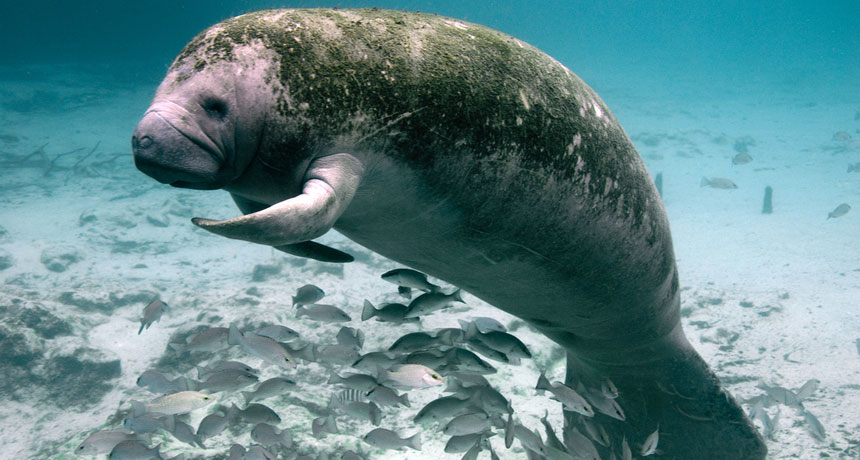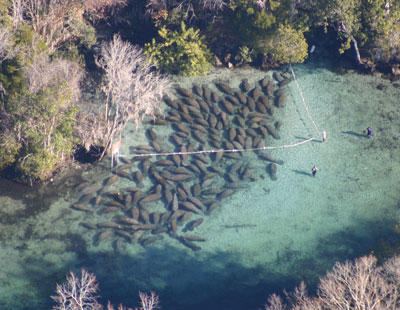How many manatees live in Florida?

Manatees aren’t always this easy to see. A new method of estimating their abundance promises to be more accurate that the aerial surveys currently used by the state of Florida.
Keith Ramos/USFWS Endangered Species/Flickr (CC-BY 2.0)
- More than 2 years ago
The ability to blend in with the background is often a lifesaving quality for an animal. But when you’re looking for that creature, that ability can turn your search into a frustrating experience. That wasn’t a problem for me last week when I spent a day on a boat in Crystal River, Florida, hoping to find manatees to swim with; we eventually found several to watch from the surface and swim with in the water. But for the officials and scientists who assess the population every year, the similarity between a manatee’s hide and the water can be a problem. And it means that the official count — which this winter topped 6,000 animals, 1,000 more than the previous high in 2010 — is bound to be imperfect, especially since all the areas where manatees live can’t be surveyed.
Julien Martin of the Florida Fish and Wildlife Conservation Commission in St. Petersburg, Fla., and colleagues think they have come up with a better way to estimate the Florida manatee population. They started with aerial surveys, but they did them a few weeks later in the year than the official count. That meant they avoided the times when large groups of manatees hang out together in near power plant outflows and warm springs. Those groups of 50 or more animals can be difficult to count. The team also used two or more observers and made multiple passes over each spot to make sure their counts were accurate. And they took other measures to avoid double-counting animals.
But counts alone aren’t enough. So the researchers used water visibility information to come up with an estimate of the likelihood that a manatee could be seen in the water. And they studied the depths to which manatees dive and how that affected whether or not they could be seen from above. The scientists then took all this data and plugged it in into computer simulations to come up with a better idea of how many animals actually swim in Florida waters.

That’s more than the official counts, and it may be a more accurate picture of the population’s status. But the scientists admit that their method is far more time-consuming and expensive than the one the state currently uses. And the Florida state counts remain valuable because they are conducted nearly every year, providing a look at long-term trends.
Both types of data will probably prove important over the coming year. Florida manatees are listed as endangered, and their numbers had dropped dangerously low due to boat strikes, red tides, habitat loss and conflict with the fishing industry. But after several years of surveys showing increasing numbers of animals, there is a push to downlist the manatees from “endangered” to merely “threatened.” The U.S. Fish and Wildlife Service is currently considering whether such a move is warranted, and a decision is expected within the next 12 months.
I do wonder whether there is a need for more regulation, not less, given my experience in Crystal River, the only place in the world where you can legally swim with manatees. Although there are rules for interactions with the animals, I saw boaters who ignored signs to drive their boats slowly and swimmers who, in their excitement, ganged up on animals.
In the winter months, more than 100,000 tourists come to Crystal River to see the hundreds of manatees that hang out in the warm springs. What I saw was just a small taste of the madness that can descend on the region at that time. Wildlife managers are talking about setting limits on where those winter tourists can go and at what times. If we want to continue seeing the population increase, such limits may not be a bad idea.






